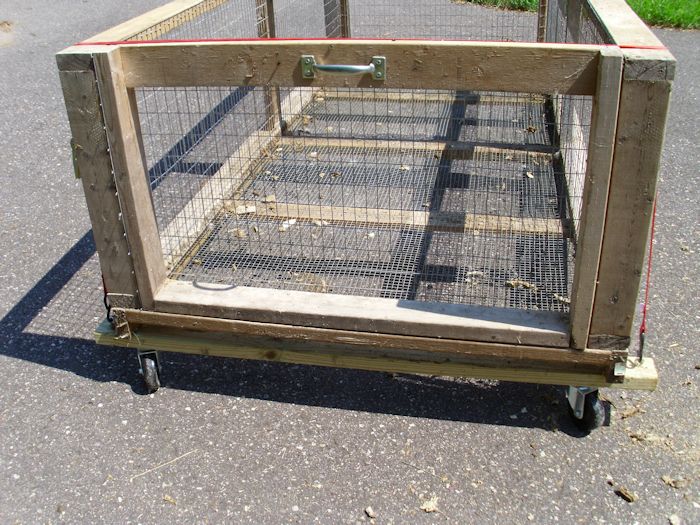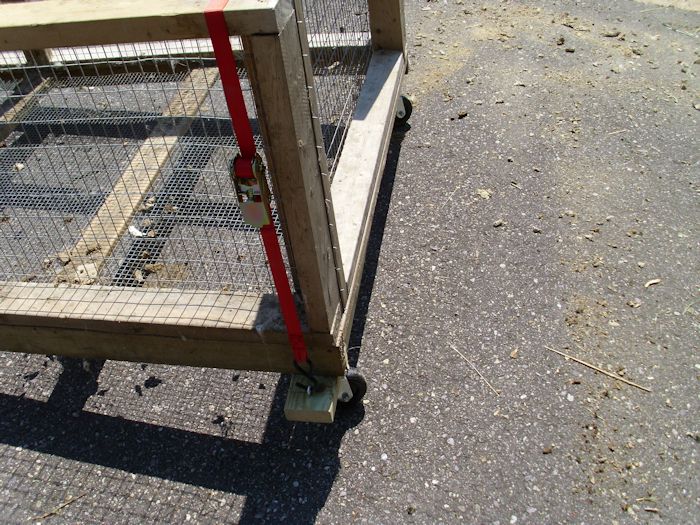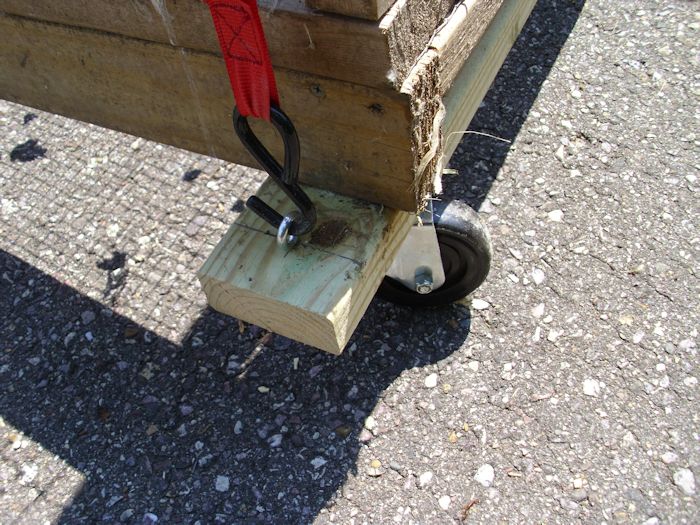It’s important to chicken and rabbit health to move tractors and cages regularly. We don’t keep our chickens and rabbits in a barn because allowing them access to sunshine and fresh air is far healthier. However, it’s harder to keep the tractors and cages clean outside. The manure builds up and ammonia emissions can begin affecting animal health. So, the solution is to move the animal to a new location so it has a clean place to live. You can then allow the manure to compost in place or shovel it up for centralized decomposition. However, moving cages can be hard on the back and you need multiple people to perform the task in many cases. The solution to this problem is to build a dolly specifically designed for the purpose of moving cages.
One of the questions that you might have about the need for a dolly is whether it might be easier to simply add permanent wheels to the cages. There are a number of problems with this approach:
- Cost: Good cage wheels cost quite a bit and duplicating them over twenty or so cages gets pricey.
- Maintainability: Anything left outside for an extended period tends to get dirty and to corrode. Keeping permanently mounted wheels functional is difficult.
- Practicality: Chicken tractors must sit completely on the ground because the open bottomed cages provide protection by keeping predators out.
- Control: Although rabbit cages are normally raised above ground level, having them on wheels is impractical when your property lacks level land (as our does). The tractor or cage could literally run away with the animals in them if the wheels are permanently mounted.
A problem with most dollies is that they have four wheels. The idea is to keep whatever you’re moving level. However, this approach doesn’t work well with tractors, where you want to raise the cage only enough to move the chickens or cages where you want to transition the rabbits to a moveable state a little at a time. Using a four wheel dolly also places stress on the tractor or cage and can cause the wheels to dig into the soil.
The dolly I created for moving the tractors and cages has only two wheels. The setup automatically adjusts for the current level of the tractor or cage and the wheels don’t dig in as a result. You raise the end of the cage up, slip the dolly underneath, tighten a strap to keep it in place, and you’re ready to go. Here’s how the dolly looks when attached.
As shown in the picture, the dolly is made up of a 2 × 4 that is a little longer than the end of the tractor or cage. There is an eye bolt at each end of the dolly for attaching the strap. The strap is the ratcheting type that has a hook on each end to make for easy attachment. The wheels are 4″ in diameter and swivel in every direction. Here is a better look at the method used to strap the cage down.
Strapping the cage in place is essential and a bungee cord won’t do the trick. The cage will slip off the dolly and you’ll lose control. Make sure you get a good nylon strap with an attached ratcheting device. Otherwise, you risk losing the cage and possibly hurting the animals that you’re trying to move.
Make sure you purchase high quality wheels for your dolly. The wheels should offer four sturdy bolt positions for attaching the wheel to the dolly. In addition, the wheels should come apart for cleaning as shown in this picture.
Notice that the pin holding the wheel bolts in place. Removing the bolt makes it possible to take the wheel completely apart for cleaning so that you can continue to obtain good service from the dolly.
Building two dollies will make it easier for anyone to move a relatively large tractor or cage with ease without doing much lifting at all (except to attach the dolly initially). Let me know your thoughts about tractor and cage movement devices at [email protected].



